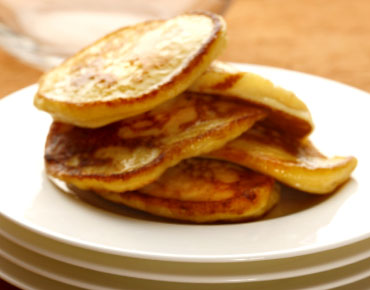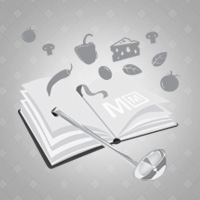Separate Diet — Basic Nutrients
General Nutrient Principles
Food provides human body with nutrients :
- for energy production
- for cells building
- for metabolism regulation.
Correlation of nutrients and products providing them is given in the table below.
For being wholesome for a body, the food must be digested. The only elements that we can digest are proteins, fats and carbons, for they are only true food elements. Digestion process is just food chemical splitting into those three components. Whatever we eat — apple, bread or meat — digestion splits these products into protein, fat and carbon. Further chemical process splits proteins into amino acids, fats into fat acids and carbons — into simple sugars. In digestion process mouth, stomach and thin bowels are involved. After decomposition and dissolving by ferments food is absorbed through bowels into blood.
Even if only one product is eaten, digestion splits these three elements at a time. This is obvious, so separate diet opponents say that nature itself provided simultaneous digestion of nutrients.
There are two groups of carbons — carbons and starches. Starch is a complex chemical compound, that couldn’t be split immediately due to their polymeric structure. First it is split into double carbons (disaccharide), next — into simple monosaccharide. Complex carbons, disaccharides and monosaccharides occur separately in products, so here we accept the following classification: simple and disaccharides are called carbons, compounds are called starches. Thus, number of nutrients rises to four.
The fifths group of nutrients are acids. They occur in products free or bound (conjugated). Bound acids become free only during metabolism process. When digesting free acids convert into heat energy, thus they are also considered to be nutrients. They occur in products in small amounts, so generally they are not taken into account when counting calorie-content.
Food Element Sources
Carbon: cakes, confectionary, jam, honey, sugar, fresh or dried fruits.
Starch: potato, cereals, flour, breads.
Fats: ham, fat, margarine.
Proteins (tissues building elements) — there are two types of proteins:
- Animal fats: meat, fish, eggs, milk, cheese.
- Vegan fat: peas, beans, lentil, nuts, cereals.
Thus, considering separate diet theory, we are dealing with five groups of nutrients: proteins, fats, carbons, starches and acids. Further in the text they would be indicated like P, F, C, S, and A.
For proper balance regulation a man needs 19 important vitamins and minerals. Some of them are needed in tinny amounts, but their lack or absence in food could cause hard diseases.
Water — very important food element, it influences metabolism, body cleansing and many other processes.
Water sources: drinks of any kind, fruits and berries, vegetables, meat, eggs.
| Significance | Main Sources | |
| Proteins | Cells and tissues building, host defenses | Meat, fish, poultry, game, milk, cheese, eggs, beans, cereals |
| Fats | Energy source, structural and plastic function, protective function | Butter, margarine, cooking fat, vegetable oil, fat meat and fish |
| Carbons | Energy source, normalizes protein and fat exchange | Flour, breads, cereals, sugar, syrups, jams, honey, fruits, vegetables |
| Vitamin А | A part of eyesight pigments, influences proper state of mucous membranes | Fat fish, fish liver, dairy products |
| Vitamin В1 (thiamine) | Influences proper state of nervous system | Yeast, beans, liver, cereals, meat |
| Vitamin В2(riboflavin) | Involved in oxidation and energy production processes, influences body growth | Yeast, meat, liver, meat extracts, cereals |
| Vitamin РР (nicotine acid) | Involved in oxidation and energy production processes, regulates digestion process, cholesterol exchange and hematosis processes | Yeast, meat, liver, meat extracts, cereals |
| Vitamin С (ascorbic acid) | Influences body immune system, Regulates cholesterol exchange process, contributes to proteins and iron assimilation | Fruits (strawberry and citruses), green vegetables, roots, potato |
| Vitamin D ("sun" vitamin) | Regulates calcium and phosphor exchange | Fish liver, fat fish, dairy products |
| Calcium, Ca | Contributes to bones and teeth building, involved in the process of nervous system stimulation and blood coagulation processes, reduces vascular permeability | Milk and dairy products, wholegrain flour |
Other Articles under this Subject:
Separate Diet — Possible Product Combinations and Substitutuins
Простые правила питания от Майкла Поллана — то, что звучит на всех языках одинаково, это не еда!Известный американский лектор и пропагандист здорового питания выпустил новую книгу... |
Если Вам понравилась эта статья, пожалуйста, оцените её или поделитесь ею с друзьями, нажав на одну из расположенных ниже кнопок. Мы будем Вам очень признательны.
|
|
|
|
|
|




































